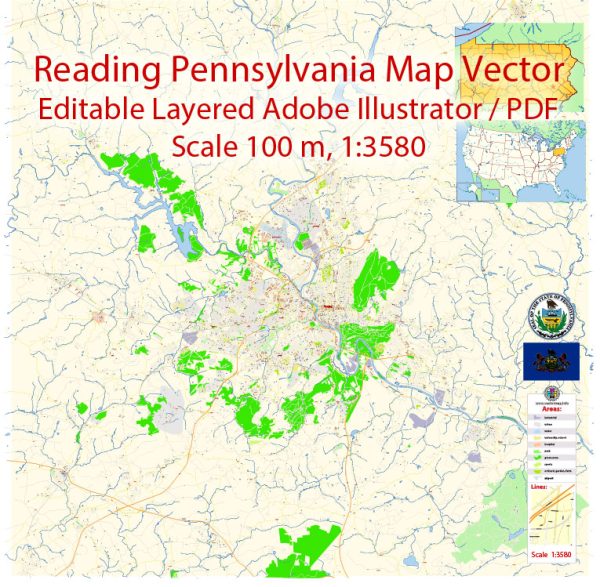Reading, Pennsylvania, has a rich history of urban development that reflects the broader trends and challenges faced by many American cities. Here is a brief overview:
- Early Settlement and Industrialization (18th-19th centuries):
- Reading was established in 1748 and grew rapidly due to its strategic location along the Schuylkill River.
- The city became a hub for early industry, with iron production and textile manufacturing playing key roles in its economic development.
- Transportation Infrastructure:
- The construction of the Union Canal in the 1820s and the arrival of the Philadelphia and Reading Railroad in the 1830s further fueled economic growth.
- The city’s location along major transportation routes contributed to its industrial success.
- Industrial Expansion and Immigration (Late 19th-early 20th centuries):
- Reading experienced significant industrial expansion in the late 19th century, with a focus on the production of textiles, hosiery, and iron.
- The city attracted a diverse immigrant population seeking employment opportunities in its industries.
- Labor Movements:
- Like many industrial cities, Reading saw the rise of labor movements and unions in the late 19th and early 20th centuries. The Great Railroad Strike of 1877 had a significant impact on the city.
- Urban Challenges and Decline (Mid-20th century):
- In the mid-20th century, Reading, like many other industrial cities, faced economic challenges and a decline in industrial activity.
- Deindustrialization, suburbanization, and changes in the global economy led to a shift in the city’s economic landscape.
- Revitalization Efforts (Late 20th century – Present):
- Reading has made efforts to revitalize its downtown area and address urban challenges. Redevelopment projects, preservation initiatives, and investments in infrastructure have been part of these efforts.
- The city has sought to diversify its economy and attract new businesses while preserving its historical character.
- Cultural and Educational Institutions:
- Reading is home to cultural and educational institutions, including museums and colleges, contributing to the city’s cultural vibrancy.
- Community and Diversity:
- Reading’s diverse population, shaped by waves of immigration, contributes to the city’s cultural richness.
- Community organizations and initiatives play a crucial role in addressing social and economic challenges.
- Challenges and Opportunities:
- Reading, like many post-industrial cities, faces ongoing challenges, including economic disparities, education issues, and community development.
- Opportunities for growth and improvement exist through strategic planning, community engagement, and partnerships.
Understanding Reading’s history provides insight into the broader patterns of urban development in the United States, from early industrialization to the challenges and opportunities faced by cities in the 21st century.


 Author: Kirill Shrayber, Ph.D.
Author: Kirill Shrayber, Ph.D.